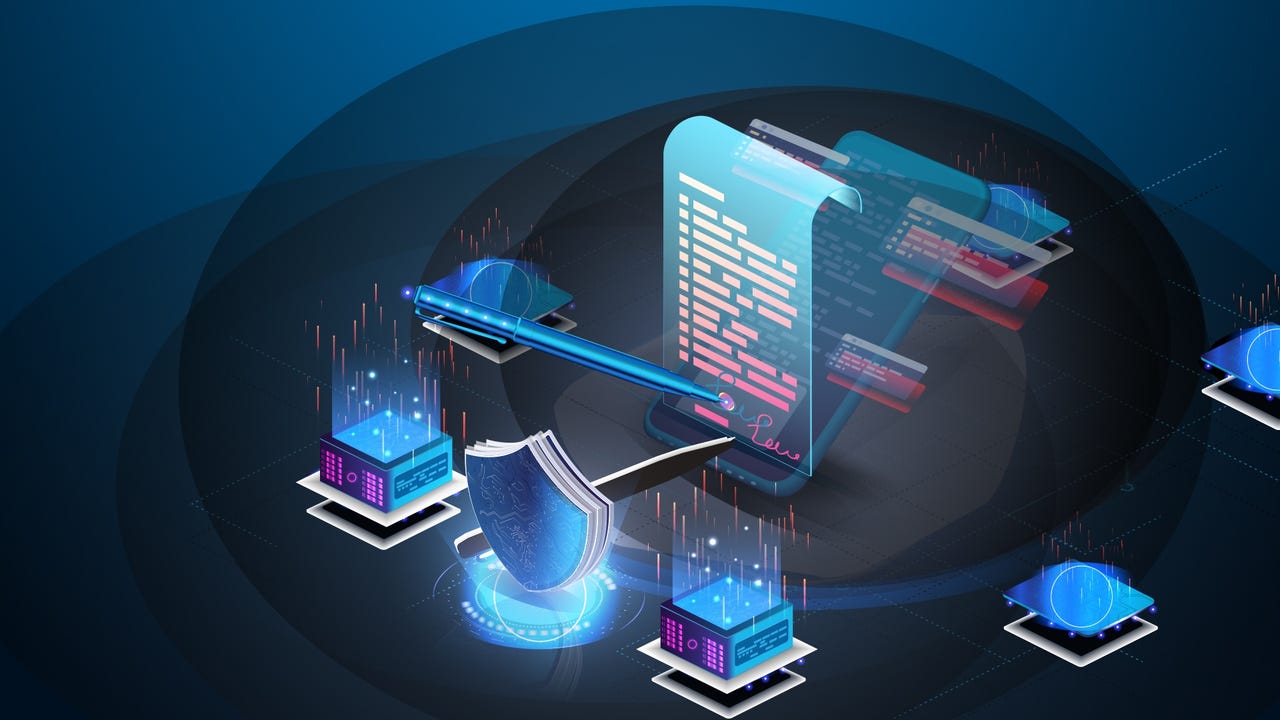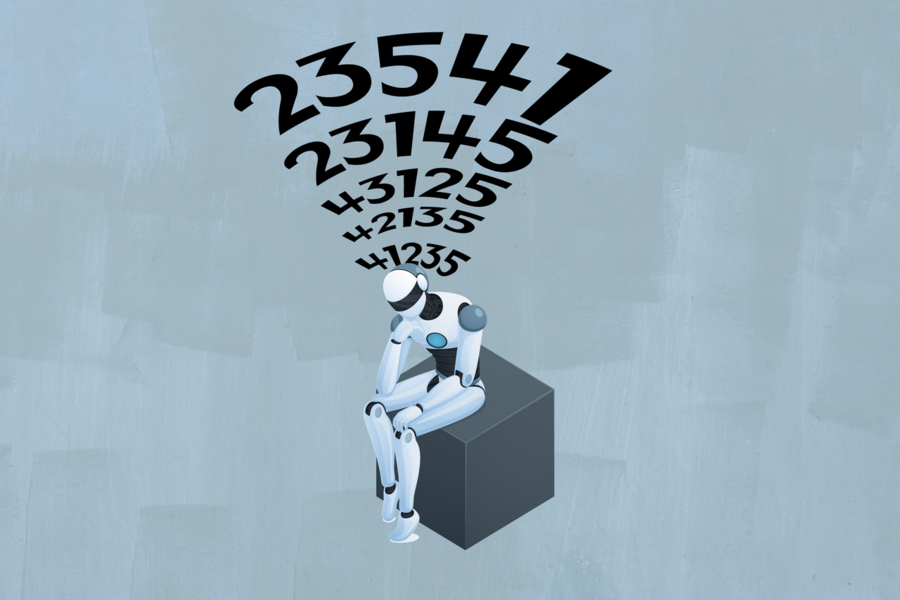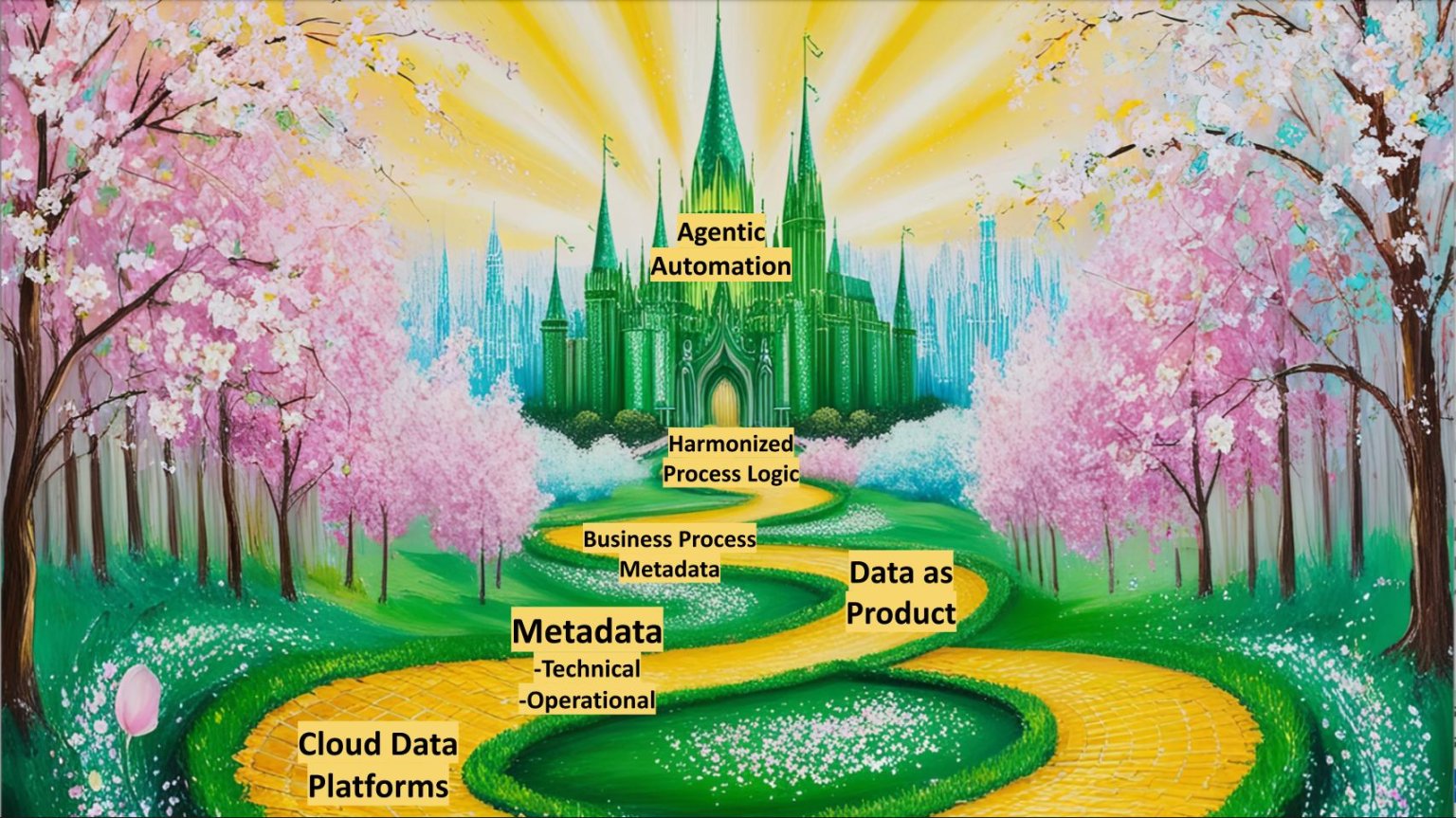Quote for the day:
"Leadership is absolutely about inspiring action, but it is also about guarding against mis-action." -- Simon Sinek
Attackers Target the Foundations of Crypto: Smart Contracts
 Central to the attack is a malicious smart contract, written in the Solidity
programming language, with obfuscated functionality that transfers stolen funds
to a hidden externally owned account (EOA), says Alex Delamotte, the senior
threat researcher with SentinelOne who wrote the analysis. ... The decentralized
finance (DeFi) ecosystem relies on smart contracts — as well as other
technologies such as blockchains, oracles, and key management — to execute
transactions, manage data on a blockchain, and allow for agreements between
different parties and intermediaries. Yet their linchpin status also makes smart
contracts a focus of attacks and a key component of fraud. "A single
vulnerability in a smart contract can result in the irreversible loss of funds
or assets," Shashank says. "In the DeFi space, even minor mistakes can have
catastrophic financial consequences. However, the danger doesn’t stop at
monetary losses — reputational damage can be equally, if not more, damaging."
... Companies should take stock of all smart contracts by maintaining a detailed
and up-to-date record of all deployed smart contracts, verifying every contract,
and conducting periodic audits. Real-time monitoring of smart contracts and
transactions can detect anomalies and provide fast response to any potential
attack, says CredShields' Shashank.
Central to the attack is a malicious smart contract, written in the Solidity
programming language, with obfuscated functionality that transfers stolen funds
to a hidden externally owned account (EOA), says Alex Delamotte, the senior
threat researcher with SentinelOne who wrote the analysis. ... The decentralized
finance (DeFi) ecosystem relies on smart contracts — as well as other
technologies such as blockchains, oracles, and key management — to execute
transactions, manage data on a blockchain, and allow for agreements between
different parties and intermediaries. Yet their linchpin status also makes smart
contracts a focus of attacks and a key component of fraud. "A single
vulnerability in a smart contract can result in the irreversible loss of funds
or assets," Shashank says. "In the DeFi space, even minor mistakes can have
catastrophic financial consequences. However, the danger doesn’t stop at
monetary losses — reputational damage can be equally, if not more, damaging."
... Companies should take stock of all smart contracts by maintaining a detailed
and up-to-date record of all deployed smart contracts, verifying every contract,
and conducting periodic audits. Real-time monitoring of smart contracts and
transactions can detect anomalies and provide fast response to any potential
attack, says CredShields' Shashank.Is AI the end of IT as we know it?
 CIOs have always been challenged by the time, skills, and complexities
involved in running IT operations. Cloud computing, low-code development
platforms, and many DevOps practices helped IT teams move “up stack,” away
from the ones and zeros, to higher-level tasks. Now the question is whether AI
will free CIOs and IT to focus more on where AI can deliver business value,
instead of developing and supporting the underlying technologies. ... Joe
Puglisi, growth strategist and fractional CIO at 10xnewco, offered this
pragmatic advice: “I think back to the days when you wrote an assembly and it
took a lot of time. We introduced compilers, higher-level languages, and now
we have AI that can write code. This is a natural progression of capabilities
and not the end of programming.” The paradigm shift suggests CIOs will have to
revisit their software development lifecycles for significant shifts in
skills, practices, and tools. “AI won’t replace agile or DevOps — it’ll
supercharge them with standups becoming data-driven, CI/CD pipelines
self-optimizing, and QA leaning on AI for test creation and coverage,” says
Dominik Angerer, CEO of Storyblok. “Developers shift from coding to curating,
business users will describe ideas in natural language, and AI will build
functional prototypes instantly. This democratization of development brings
more voices into the software process while pushing IT to focus on oversight,
scalability, and compliance.”
CIOs have always been challenged by the time, skills, and complexities
involved in running IT operations. Cloud computing, low-code development
platforms, and many DevOps practices helped IT teams move “up stack,” away
from the ones and zeros, to higher-level tasks. Now the question is whether AI
will free CIOs and IT to focus more on where AI can deliver business value,
instead of developing and supporting the underlying technologies. ... Joe
Puglisi, growth strategist and fractional CIO at 10xnewco, offered this
pragmatic advice: “I think back to the days when you wrote an assembly and it
took a lot of time. We introduced compilers, higher-level languages, and now
we have AI that can write code. This is a natural progression of capabilities
and not the end of programming.” The paradigm shift suggests CIOs will have to
revisit their software development lifecycles for significant shifts in
skills, practices, and tools. “AI won’t replace agile or DevOps — it’ll
supercharge them with standups becoming data-driven, CI/CD pipelines
self-optimizing, and QA leaning on AI for test creation and coverage,” says
Dominik Angerer, CEO of Storyblok. “Developers shift from coding to curating,
business users will describe ideas in natural language, and AI will build
functional prototypes instantly. This democratization of development brings
more voices into the software process while pushing IT to focus on oversight,
scalability, and compliance.”From Indicators to Insights: Automating Risk Amplification to Strengthen Security Posture
 Security analysts don’t want more alerts. They want more relevant ones.
Traditional SIEMs generate events using their own internal language that involve
things like MITRE tags, rule names and severity scores. But what frontline
responders really want to know is which users, systems, or cloud resources are
most at risk right now. That’s why contextual risk modeling matters. Instead of
alerting on abstract events, modern detection should aggregate risk around
assets including users, endpoints, APIs, or services. This shifts the SOC
conversation from “What alert fired?” to “Which assets should I care about
today?” ... The burden of alert fatigue isn’t just operational but also
emotional. Analysts spend hours chasing shadows, pivoting across tools, chasing
one-off indicators that lead nowhere. When everything is an anomaly, nothing is
actionable. Risk amplification offers a way to reduce the unseen yet heavy
weight on security analysts and the emotional toll it can take by aligning
high-risk signals to high-value assets and surfacing insights only when multiple
forms of evidence converge. Rather than relying on a single failed login or
endpoint alert, analysts can correlate chains of activity whether they be login
anomalies, suspicious API queries, lateral movement, or outbound data flows –
all of which together paint a much stronger picture of risk.
Security analysts don’t want more alerts. They want more relevant ones.
Traditional SIEMs generate events using their own internal language that involve
things like MITRE tags, rule names and severity scores. But what frontline
responders really want to know is which users, systems, or cloud resources are
most at risk right now. That’s why contextual risk modeling matters. Instead of
alerting on abstract events, modern detection should aggregate risk around
assets including users, endpoints, APIs, or services. This shifts the SOC
conversation from “What alert fired?” to “Which assets should I care about
today?” ... The burden of alert fatigue isn’t just operational but also
emotional. Analysts spend hours chasing shadows, pivoting across tools, chasing
one-off indicators that lead nowhere. When everything is an anomaly, nothing is
actionable. Risk amplification offers a way to reduce the unseen yet heavy
weight on security analysts and the emotional toll it can take by aligning
high-risk signals to high-value assets and surfacing insights only when multiple
forms of evidence converge. Rather than relying on a single failed login or
endpoint alert, analysts can correlate chains of activity whether they be login
anomalies, suspicious API queries, lateral movement, or outbound data flows –
all of which together paint a much stronger picture of risk.
The Immune System of Software: Can Biology Illuminate Testing?
CSO hiring on the rise: How to land a top security exec role
 “Boards want leaders who can manage risk and reputation, which has made soft
skills — such as media handling, crisis communication, and board or financial
fluency — nearly as critical as technical depth,” Breckenridge explains. ...
“Organizations are seeking cybersecurity leaders who combine technical depth, AI
fluency, and strong interpersonal skills,” Fuller says. “AI literacy is now a
baseline expectation, as CISOs must understand how to defend against AI-driven
threats and manage governance frameworks.” ... Offers of top pay and authority
to CSO candidates obviously come with high expectations. Organizations are
looking for CSOs with a strong blend of technical expertise, business acumen,
and interpersonal strength, Fuller says. Key skills include cloud security,
identity and access management (IAM), AI governance, and incident response
planning. Beyond technical skills, “power skills” such as communication,
creativity, and problem-solving are increasingly valued, Fuller explains. “The
ability to translate complex risks into business language and influence
board-level decisions is a major differentiator. Traits such as resilience,
adaptability, and ethical leadership are essential — not only for managing
crises but also for building trust and fostering a culture of security across
the enterprise,” he says.
“Boards want leaders who can manage risk and reputation, which has made soft
skills — such as media handling, crisis communication, and board or financial
fluency — nearly as critical as technical depth,” Breckenridge explains. ...
“Organizations are seeking cybersecurity leaders who combine technical depth, AI
fluency, and strong interpersonal skills,” Fuller says. “AI literacy is now a
baseline expectation, as CISOs must understand how to defend against AI-driven
threats and manage governance frameworks.” ... Offers of top pay and authority
to CSO candidates obviously come with high expectations. Organizations are
looking for CSOs with a strong blend of technical expertise, business acumen,
and interpersonal strength, Fuller says. Key skills include cloud security,
identity and access management (IAM), AI governance, and incident response
planning. Beyond technical skills, “power skills” such as communication,
creativity, and problem-solving are increasingly valued, Fuller explains. “The
ability to translate complex risks into business language and influence
board-level decisions is a major differentiator. Traits such as resilience,
adaptability, and ethical leadership are essential — not only for managing
crises but also for building trust and fostering a culture of security across
the enterprise,” he says.From legacy to SaaS: Why complexity is the enemy of enterprise security
By modernizing, i.e., moving applications to a more SaaS-like consumption model, the network perimeter and associated on-prem complexity tends to dissipate, which is actually a good thing, as it makes ZTNA easier to implement. As the main entry point into an organization’s IT system becomes the web application URL (and browser), this reduces attackers’ opportunities and forces them to focus on the identity layer, subverting authentication, phishing, etc. Of course, a higher degree of trust has to be placed (and tolerated) in SaaS providers, but at least we now have clear guidance on what to look for when transitioning to SaaS and cloud: identity protection, MFA, and phishing-resistant authentication mechanisms become critical—and these are often enforced by default or at least much easier to implement compared to traditional systems. ... The unwillingness to simplify technology stack by moving to SaaS is then combined with a reluctant and forced move to the cloud for some applications, usually dictated by business priorities or even ransomware attacks (as in the BL case above). This is a toxic mix which increases complexity and reduces the ability for a resource-constrained organization to keep security risks at bay.Why Metadata Is the New Interface Between IT and AI
 A looming risk in enterprise AI today is using the wrong data or proprietary
data in AI data pipelines. This may include feeding internal drafts to a public
chatbot, training models on outdated or duplicate data, or using sensitive files
containing employee, customer, financial or IP data. The implications range from
wasted resources to data breaches and reputational damage. A comprehensive
metadata management strategy for unstructured data can mitigate these risks by
acting as a gatekeeper for AI workflows. For example, if a company wants to
train a model to answer customer questions in a chatbot, metadata can be used to
exclude internal files, non-final versions, or documents marked as confidential.
Only the vetted, tagged, and appropriate content is passed through for embedding
and inference. This is a more intelligent, nuanced approach than simply dumping
all available files into an AI pipeline. With rich metadata in place,
organizations can filter, sort, and segment data based on business requirements,
project scope, or risk level. Metadata augments vector labeling for AI
inferencing. A metadata management system helps users discover which files to
feed the AI tool, such as health benefits documents in an HR chatbot while
vector labeling gives deeper information as to what’s in each document.
A looming risk in enterprise AI today is using the wrong data or proprietary
data in AI data pipelines. This may include feeding internal drafts to a public
chatbot, training models on outdated or duplicate data, or using sensitive files
containing employee, customer, financial or IP data. The implications range from
wasted resources to data breaches and reputational damage. A comprehensive
metadata management strategy for unstructured data can mitigate these risks by
acting as a gatekeeper for AI workflows. For example, if a company wants to
train a model to answer customer questions in a chatbot, metadata can be used to
exclude internal files, non-final versions, or documents marked as confidential.
Only the vetted, tagged, and appropriate content is passed through for embedding
and inference. This is a more intelligent, nuanced approach than simply dumping
all available files into an AI pipeline. With rich metadata in place,
organizations can filter, sort, and segment data based on business requirements,
project scope, or risk level. Metadata augments vector labeling for AI
inferencing. A metadata management system helps users discover which files to
feed the AI tool, such as health benefits documents in an HR chatbot while
vector labeling gives deeper information as to what’s in each document.
Ask a Data Ethicist: What Should You Know About De-Identifying Data?
Simply put, data de-identification is removing or obscuring details from a dataset in order to preserve privacy. We can think about de-identification as existing on a continuum... Pseudonymization is the application of different techniques to obscure the information, but allows it to be accessed when another piece of information (key) is applied. In the above example, the identity number might unlock the full details – Joe Blogs of 123 Meadow Drive, Moab UT. Pseudonymization retains the utility of the data while affording a certain level of privacy. It should be noted that while the terms anonymize or anonymization are widely used – including in regulations – some feel it is not really possible to fully anonymize data, as there is always a non-zero chance of reidentification. Yet, taking reasonable steps on the de-identification continuum is an important part of compliance with requirements that call for the protection of personal data. There are many different articles and resources that discuss a wide variety of types of de-identification techniques and the merits of various approaches ranging from simple masking techniques to more sophisticated types of encryption. The objective is to strike a balance between the complexity of the the technique to ensure sufficient protection, while not being burdensome to implement and maintain.5 ways business leaders can transform workplace culture - and it starts by listening
 Antony Hausdoerfer, group CIO at auto breakdown specialist The AA, said
effective leaders recognize that other people will challenge established ways of
working. Hearing these opinions comes with an open management approach. "You
need to ensure that you're humble in listening, but then able to make decisions,
commit, and act," he said. "Effective listening is about managing with humility
with commitment, and that's something we've been very focused on recently."
Hausdoerfer told ZDNET how that process works in his IT organization. "I don't
know the answer to everything," he said. "In fact, I don't know the answer to
many things, but my team does, and by listening to them, we'll probably get the
best outcome. Then we commit to act." ... Bev White, CEO at technology and
talent solutions provider Nash Squared, said open ears are a key attribute for
successful executives. "There are times to speak and times to listen --
good leaders recognize which is which," she said. "The more you listen, the more
you will understand how people are really thinking and feeling -- and with so
many great people in any business, you're also sure to pick up new information,
deepen your understanding of certain issues, and gain key insights you need."
Antony Hausdoerfer, group CIO at auto breakdown specialist The AA, said
effective leaders recognize that other people will challenge established ways of
working. Hearing these opinions comes with an open management approach. "You
need to ensure that you're humble in listening, but then able to make decisions,
commit, and act," he said. "Effective listening is about managing with humility
with commitment, and that's something we've been very focused on recently."
Hausdoerfer told ZDNET how that process works in his IT organization. "I don't
know the answer to everything," he said. "In fact, I don't know the answer to
many things, but my team does, and by listening to them, we'll probably get the
best outcome. Then we commit to act." ... Bev White, CEO at technology and
talent solutions provider Nash Squared, said open ears are a key attribute for
successful executives. "There are times to speak and times to listen --
good leaders recognize which is which," she said. "The more you listen, the more
you will understand how people are really thinking and feeling -- and with so
many great people in any business, you're also sure to pick up new information,
deepen your understanding of certain issues, and gain key insights you need."Beyond Efficiency: AI's role in reshaping work and reimagining impact
 The workplace of the future is not about humans versus machines; it's about
humans working alongside machines. AI's real value lies in augmentation:
enabling people to do more, do better, and do what truly matters. Take
recruitment, for example. Traditionally time-intensive and often vulnerable to
unconscious bias, hiring is being reimagined through AI. Today, organisations
can deploy AI to analyse vast talent pools, match skills to roles with
precision, and screen candidates based on objective data. This not only reduces
time-to-hire but also supports inclusive hiring practices by mitigating biases
in decision-making. In fact, across the employee lifecycle, it personalises
experiences at scale. From career development tools that recommend roles and
learning paths aligned with individual aspirations, to chatbots that provide
real-time HR support, AI makes the employee journey more intuitive, proactive,
and empowering. ... AI is not without its challenges. As with any transformative
technology, its success hinges on responsible deployment. This includes robust
governance, transparency, and a commitment to fairness and inclusion. Diversity
must be built into the AI lifecycle, from the data it's trained on to the
algorithms that guide its decisions.
The workplace of the future is not about humans versus machines; it's about
humans working alongside machines. AI's real value lies in augmentation:
enabling people to do more, do better, and do what truly matters. Take
recruitment, for example. Traditionally time-intensive and often vulnerable to
unconscious bias, hiring is being reimagined through AI. Today, organisations
can deploy AI to analyse vast talent pools, match skills to roles with
precision, and screen candidates based on objective data. This not only reduces
time-to-hire but also supports inclusive hiring practices by mitigating biases
in decision-making. In fact, across the employee lifecycle, it personalises
experiences at scale. From career development tools that recommend roles and
learning paths aligned with individual aspirations, to chatbots that provide
real-time HR support, AI makes the employee journey more intuitive, proactive,
and empowering. ... AI is not without its challenges. As with any transformative
technology, its success hinges on responsible deployment. This includes robust
governance, transparency, and a commitment to fairness and inclusion. Diversity
must be built into the AI lifecycle, from the data it's trained on to the
algorithms that guide its decisions. 


































